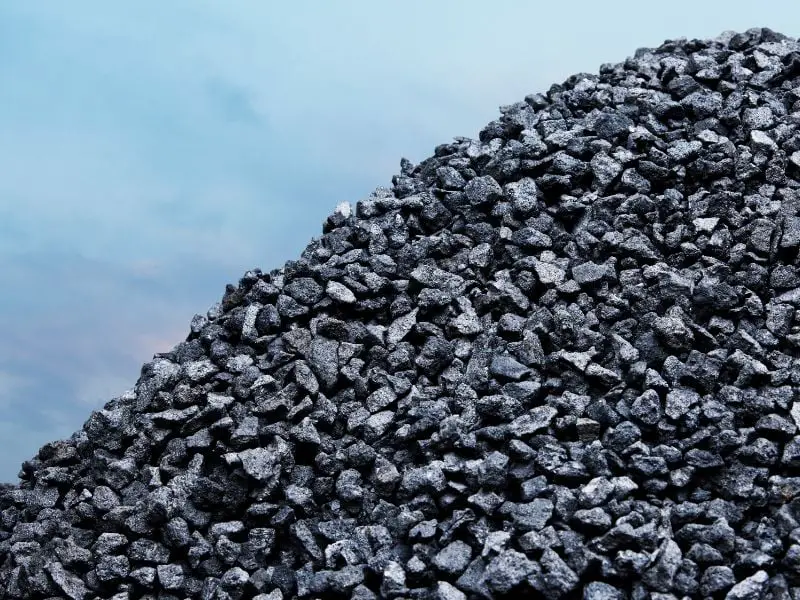Coal is one of the most popular sources of energy used on a global scale. But is it really damaging to us?
Coal utilization has been a critical benefit in bringing forth modern technology advances and aiding in the industrializing process. Coal is a considerable element in numerous industries, from electricity-generating plants to steel production facilities. Despite providing us with power, warmth, and other benefits, burning or using coal significantly affects our natural world.
Combusting coal may create greenhouse gases and other pollutants that can harm public health and nature. This article will examine why burning coal is harmful and how we can reduce its environmental damage.
What Makes Coal Harmful to the Environment
Coal is harmful to the environment because it releases pollutants when mined, transported, and burned. These pollutants include carbon dioxide, sulfur dioxide, nitrogen oxides, and particulate matter. These pollutants can contribute to global warming, acid rain, and air pollution, harming human health and damaging natural ecosystems.
Additionally, coal mining can harm local communities and ecosystems, including deforestation, habitat destruction, and water pollution.

How Bad Is Coal for Our Health?
In Australia, coal’s detrimental effects on health can cost taxpayers an annual amount of $2.6 billion. They can bring about many health issues, such as lung cancer, coronary illness, and premature death. In the past years, there have been allegations of the re-appearance of the fatal ‘black lung’ in Australia, which was formerly believed to have been eliminated. Starting from 2015, there have been 21 verified cases.

Other parts of the world are undergoing severe health effects from coal. In China, 2013 had 366,000 fatalities that were due to coal. Every year, India experiences 169,000 casualties as an outcome of coal. In America, 50,000 deaths linked with coal are recorded yearly, with air pollution from power stations powered by coal adding to four out of the five primary sources of mortality in the U.S. (heart condition, malignancy, stroke, and persistent respiration diseases).
How Is Coal Contributing to Climate Change?
When combusting fossil fuels, the process emits gases into the atmosphere, which can entrap heat and alter the Earth’s weather. This process causes a surge in CO2 levels and other gasses, thus causing global warming. Here are some facts about coal today:
- Carbon dioxide (CO2) and nitrous oxide (N2O) contribute to global warming and are produced as a byproduct of coal burning. Coal combustion in power plants results in the emission of more greenhouse gases than the production of electricity from any other source.
- Coal provides about 33% of the energy used to generate electricity in the United States. As a result, coal-fired power plants are a primary focus for efforts to reduce emissions of greenhouse gases. The usage of coal to generate power is on the decline, and by 2018, coal’s share of the electrical energy market has dropped to 27%.
- Fortunately, power plants powered by coal in the U.S. are becoming obsolete due to economic elements resulting from state and federal regulations, outdated machinery, and rivalry with other sources of energy, such as natural gas, wind turbines, and solar energy.
- Carbon capture and storage (CCS) techniques have been propagated to cope with climate discharges from torching coal by pumping the CO2 generated through igniting coal beneath the ground instead of into the atmosphere. Nevertheless, the innovation could be more costly. Even if the carbon is captured, the coal-fired plant will still lead to destructive coal mining and harmful coal ash.
Why Is the World Still Using So Much Coal?
When it comes to energy, coal may seem like a cost-effective option, but it has many hidden expenses related to health and the environment. Additionally, coal is easily accessible in many places and easily transported and stored.
Certain groups benefit from using coal, such as coal companies, power companies, railway companies that transport coal, and manufacturers of steel, cement, and aluminum. These companies may want to keep how things are being done since they profit from the status quo, and governments may support them because of their influence, the income and all the jobs they provide. However, the United States has shown that coal usage can decrease quickly when more financially sensible options exist.

Daily Habits to Reduce Reliance on Fossil Fuels
Most energy used in the United States is derived from fossil fuels. According to the U.S. Energy Information Administration, natural gas, petroleum, and coal have accounted for 81.5% of the nation’s energy use for more than 100 years. However, the use of fossil fuels has been related to air pollution, global warming, toxic discharge into the environment, and health issues.
1. Use LED lights
Use led lights instead of incandescent bulbs: Incandescent bulbs are inefficient and waste energy because most of the energy produced is converted to heat instead of light. However, LED lights light more efficiently and last longer. They also cost less to operate than incandescent bulbs and do not contain mercury or other toxins.
2. Turn off the Lights
When leaving a room, turn off the lights. This simple action alone can save the demand for electric utilities, which requires less output from the power sources.

3. Switch off Your Television
For energy savings and to extend the life of your electronics (and the money you spent on them) so that you don’t have to replace them as soon, consider turning off your television, computer, and other electrical devices while you’re not using them.
4. Use Appliances That Pass the ENERGY Star Label
Look for appliances with the ENERGY STAR label if you want to save energy and money. These items are expressly engineered to be more energy efficient than others, allowing you to save money on your energy bill. The mark may be seen on various products, including air conditioners, heaters, refrigerators, etc. When you view the label, you’ll also see an estimate of how much money you can save by utilizing the energy-efficient product each year.
5. Reuse Products
Reuse items that need the usage of fossil fuels to manufacture. Not using paper or plastic shopping bags may minimize the pressure on the fossil-fuel-intensive manufacturing process. Instead, use cotton grocery bags. You can reduce your usage of plastic and Styrofoam by getting glass plates and cups that can be reused several times rather than just once.

6. Buy Things That Are Made With Recycled Materials
This contributes to a reduction in the need for fossil fuels as well. Check the item labels to see whether they mention the presence of such components. It is also helpful to reuse everything you can, such as the ink cartridges in your printer.
7. Recycle Waste
Recycling waste means less waste ends up in landfills. Many communities have systems that allow you to separate various sorts of garbage into distinct containers. For example, plastics, paper, and metal cans should be separated. You can also give away clothing, lighting, and appliances that you no longer need to individuals who can benefit from them. This ensures that these things remain usable and helps to prevent waste. According to GreenAmerica.org, about one-third of garbage in the United States is recycled or composted; however, the Environmental Protection Agency claims they can recycle up to 75% of all waste.
Related: E-Waste Recycling, Truth About Recycling, Top Metals to Recycle
8. Take Public Transportation
Gasoline is produced using fossil fuels, which are a form of oil. When fewer cars are on the road, fewer cars emit pollution into the atmosphere. Using public transit, such as buses or trains, minimizes the number of automobiles on the road. You might also share rides with others traveling in the same direction or use a bicycle or walk for short distances. These are all methods for reducing the quantity of pollution produced by automobiles.

Fossil fuels are bad for the environment and human health. However, there are many ways to reduce our reliance on them. These include using LED lights, turning off the lights when leaving a room, switching off your television, using appliances with the ENERGY STAR label, reusing products, recycling waste, taking public transportation, and cycling or walking when possible.


Giving thanks for your write-up. I know that with today’s complicated world, folks have many beliefs and this has made it to be really hard for learners just like me. However, you have made the idea very easy for me to fully grasp and I now have the awareness of the correct thing. Your own continued reputation as among the top experts about this topic may be boosted through words associated with appreciation from subscribers like me. Thanks, once more.
Can I recently say such a relief to locate somebody that truly knows what theyre referring to online. You certainly have learned to bring an issue to light making it crucial. More and more people need to see this and see why side of the story. I cant believe youre no more popular since you certainly have the gift.